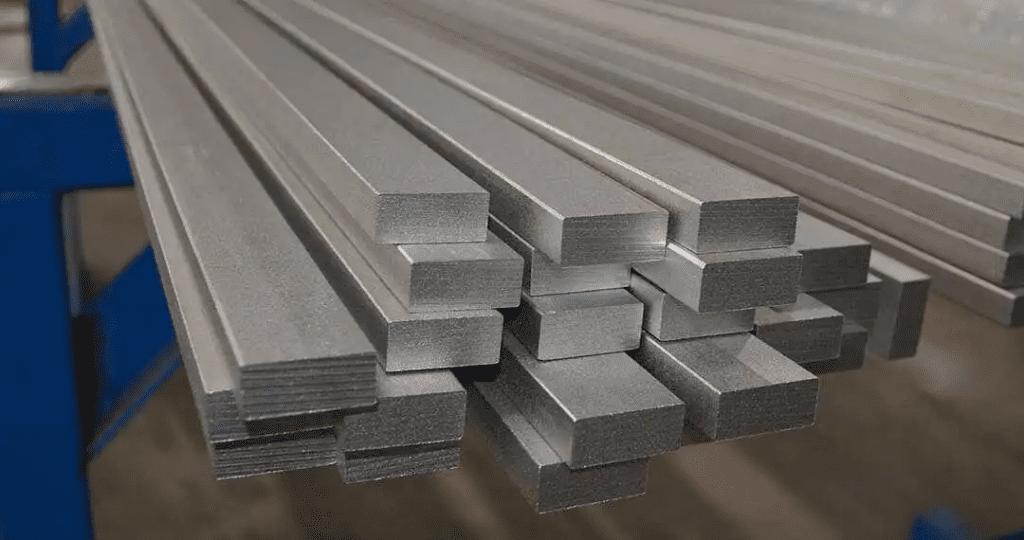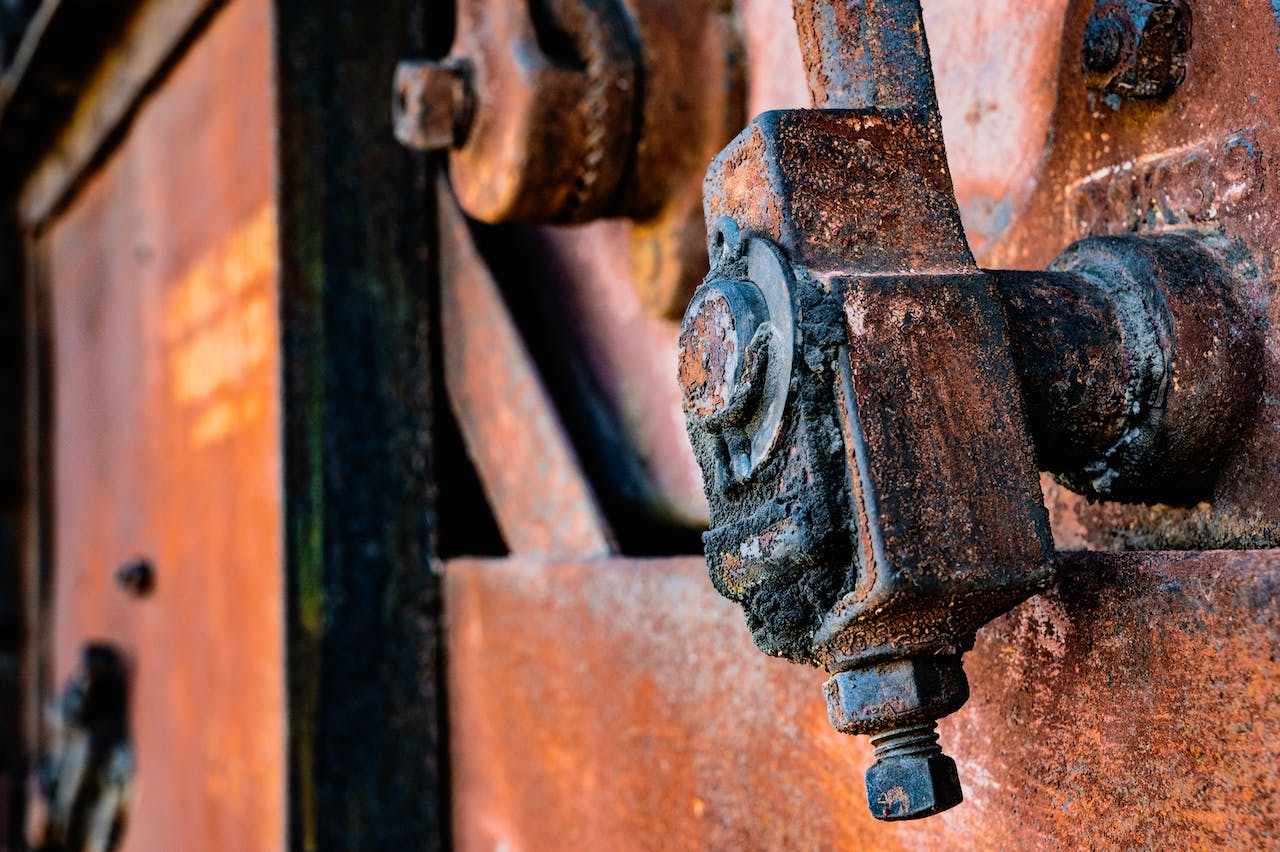What is galvanic corrosion? Galvanic corrosion is an electrochemical process where the use of two dissimilar metals in the presence of an electrolyte causes one metal to corrode over the other it is paired with.
What Is Galvanic Corrosion at the Electrochemical Level?
At the most basic level, galvanic corrosion occurs due to an electrical circuit being created between two metals thanks to the presence of an electrolyte.
An electrolyte is simply a negative or positive ion in a solution that creates an electrically conductive path that conducts a charge through the movement of ions. This allows the more active metal of the two metals to dissolve into the electrolyte, leading to severe galvanic corrosion.
The more reactive metal forms an anode, while the less reactive, often a noble or cathodic metal, forms the cathode. This process is akin to anodizing cast aluminum or rolled and extruded aluminum.
However, unlike anodizing, which encourages the formation of protective oxides on the metal surface, galvanic corrosion simply dissolves metal ions into the electrolyte bath. The movement of the ions prevents the build-up of an electric charge that would bring the reaction to a halt, forming galvanic corrosion cells.
The most common electrolyte solution is seawater, which makes bimetallic corrosion a potential hazard in any marine environment and ashore in coastal areas as well. While these are the environments where the hazard of galvanic corrosion is most apparent, something as simple as slightly acidic rain can also start the process when two dissimilar metals are in contact.
What Are the Effects of Galvanic Corrosion?
The effects of galvanic corrosion are many and often quite spectacular. The three-hulled USS Independence, commissioned in 2010 and decommissioned in 2021, is a prime example. Her decommissioning was largely due to the accelerated corrosion between her aluminum hull and her stainless steel engine; the presence of seawater, acting as a corrosion cell, helped make the ship prohibitively expensive to maintain.
Other examples of galvanic corrosion have been equally spectacular and costly, such as the following:
- The Statue of Liberty experienced galvanic corrosion between the wrought iron supports and the copper saddles. These saddles braced the supports to the statue’s copper skin, a noble metal. The swelling caused by the rusting iron tore many of these saddles free, showcasing an increase in corrosion rate.
- Lighting fixtures in Boston’s big dig tunnel fell due to the corrosion of aluminum housings anchored with stainless steel clips. This case of galvanic corrosion, where different metals formed a corrosion cell, resulted in the accelerated corrosion of the fixtures. Replacing these corroded lighting fixtures cost the city $54 million.
- Galvanic corrosion also contributed to the Flint water crisis. The system’s combination of galvanized steel, lead, and copper pipes led to accelerated corrosion when corrosion control measures ceased, exacerbating the loosening of lead scales previously deposited in the service.
These instances of galvanic corrosion proved quite costly to remediate. On two occasions, the corrosion placed lives and well-being at risk. In Flint, the issues with galvanic corrosion will likely have permanent consequences for the residents. The majority of cases of galvanic corrosion are not nearly as consequential.
However, given the unpredictability and varying corrosion rate of such incidents, even seemingly minor corrosion can have a significant impact, necessitating due diligence to prevent galvanic corrosion.
|
Buy Certified High-Quality Metals for Industrial Solutions |
||
|
New Aluminum |
New Steel |
New Stainless Steel |
 |
 |
 |
| Reliable supply: Consistent, certified aluminum stock you can trust. High-quality material: Superior-grade aluminum for precision needs. Custom cuts: Accurate cuts down to thousandths of an inch. |
Durability and strength: Reliable for projects needing long-lasting, tough materials. Cost-effective: Quality steel that offers strength without breaking the bank. Custom cutting: Precise cuts tailored to exact needs with top-tier cutting tools. |
Sustainability: Highly eco-friendly as the most recyclable metal on earth. High durability: Resistant to corrosion and wear, ensuring long-lasting performance. Custom precision cuts: Tailored to your specifications with quick, accurate results. |
Preventing Galvanic Corrosion
The logical way to prevent galvanic corrosion is to only use similar metals in any structure or assembly. However, this is a tall order, given that many different metals might need to be combined to meet engineering specifications. An aluminum fastener might not have the strength to hold a large aluminum assembly.
This leads to the second option: using a compatible metal, such as stainless steel. The compatibility of two metals can be seen in the following chart:

Alt: Chart of what galvanic corrosion risks are in metal pairings.
In some cases, the specifications of a project demand that two incompatible metals be used in the same assembly, leading to potential bimetallic corrosion or crevice corrosion.
For example, aluminum might be the only metal that is both light and cost-effective for a large assembly, while stainless steel might be the only commonly available fastener with the necessary tensile strength.
It’s essential to isolate the metals from each other electrically to prevent galvanic coupling. This can be achieved mechanically with non-conductive materials like plastic or Teflon fittings that surround the stainless steel fastener, preventing direct electrical contact with the aluminum.
However, mechanical isolation is a temporary measure against bimetallic corrosion. Plastic and Teflon fasteners can stiffen and crack over time.
A more lasting solution is isolating the metals through coatings, like anodizing aluminum versus powder coating stainless steel fittings, which is informed by the galvanic series. Hot-dipped galvanized steel fasteners also follow this principle, but the zinc coating, which is lower in the galvanic series, can be removed during installation, making this a less reliable solution for preventing severe galvanic corrosion on metallic structures.
Finally, the use of sacrificial anodes, based on the galvanic series, offers another method to minimize galvanic corrosion. Metal watercraft often use a less noble or more anodic metal block, like zinc or magnesium alloy, deliberately contacting both the hull and seawater. This sacrificial block, lower in the galvanic series, will corrode before the hull, actively helping to prevent corrosion of the metallic structures while it deteriorates.
Cathodic protection is a common practice in marine environments. Additionally, the use of silver plated copper can also play a role in cathodic protection, particularly in electrical applications where contact between metals needs to be managed carefully.
Importance of Material Selection and Maintenance
When designing structures or assemblies, careful consideration of the materials used is crucial to prevent galvanic corrosion. The selection of metals with similar electrochemical properties reduces the risk of severe galvanic corrosion.
However, when dissimilar metals must be used, applying a zinc coating or other protective layers can help mitigate the effects. Regular maintenance and inspection are also vital to ensure that cathodic protection systems remain effective.
Additionally, proper design and installation practices can avoid unnecessary electrical contact between metals, significantly extending the life of the structure and preventing costly repairs.
Industrial Metal Service is an expert aluminum and metal supplier that ships nationwide. IMS provides structural 6061 aluminum, cast aluminum tooling plates, and a variety of copper, brass, bronze, stainless steel, cupronickel, nickel alloys, and other metals.
Whatever your metal needs are, we have you covered. Call or request a quote today.
 Angle
Angle Cast Plate
Cast Plate Diamond Plate
Diamond Plate Flat Bar
Flat Bar Plate
Plate Round Bar
Round Bar Square Bar
Square Bar Square Tubing
Square Tubing Round Tubing
Round Tubing Angle
Angle Channel
Channel Diamond Plate
Diamond Plate I Beam
I Beam Round Bar
Round Bar Sheet
Sheet Square tubing
Square tubing Round Tubing
Round Tubing Rectangular Tubing
Rectangular Tubing Plate
Plate Rectangular Bar
Rectangular Bar Rectangular Tubing
Rectangular Tubing Round Bar
Round Bar Sheet
Sheet Square Bar
Square Bar Square Tubing
Square Tubing
